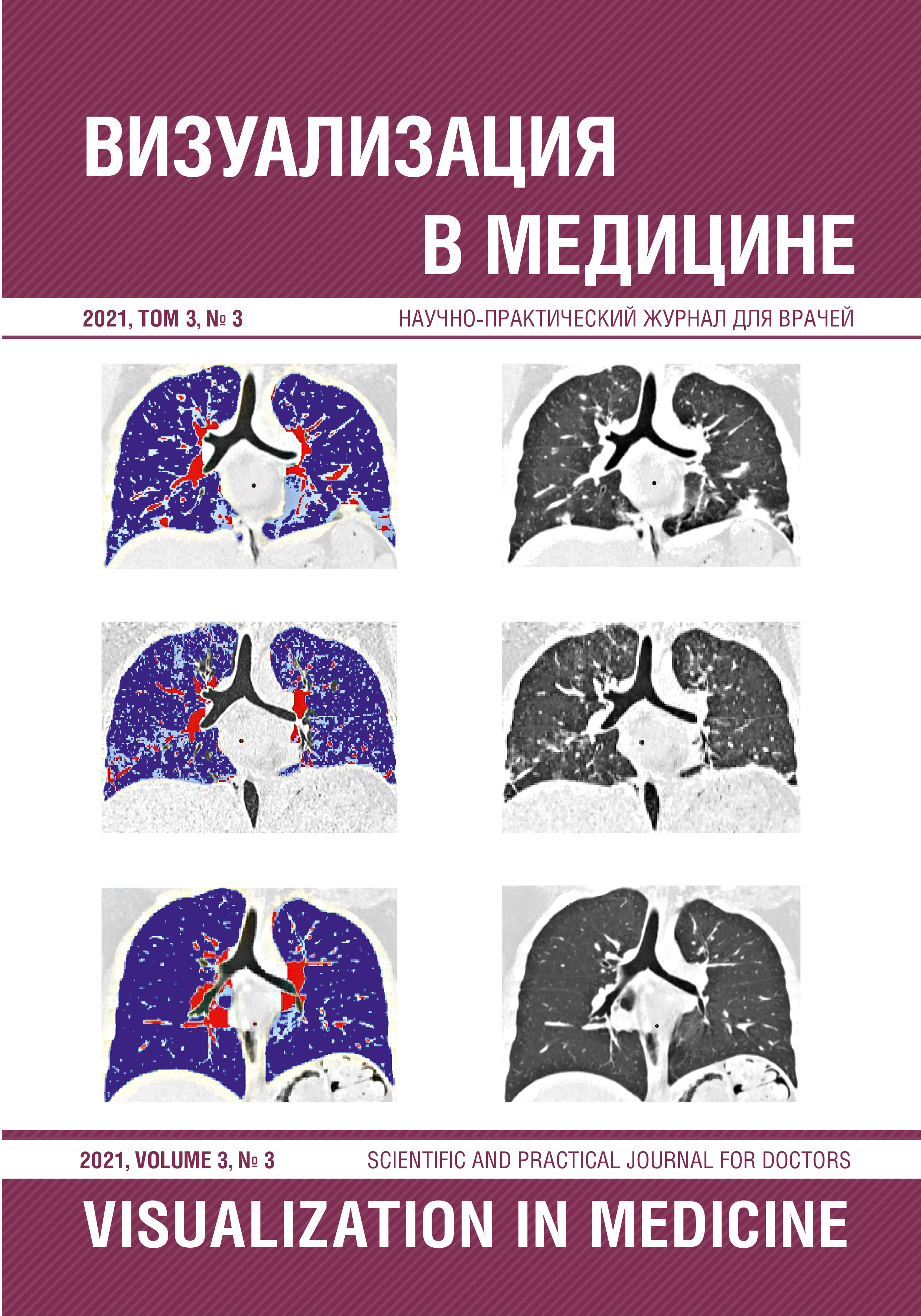COMPARISON OF T2 MSME AND DT1 METHODS FOR QUANTITATIVE ASSESSMENT OF FAT INFILTRATION OF THE PELVIC AND LOWER LIMBS MUSCLES IN PATIENTS WITH PCMDR2
Abstract
Dysferlinopathy is a clinically heterogeneous progressive muscular dystrophy caused by mutations in the DYSF gene, which leads to impaired repair of the sarcolemma, an increase in its permeability and death of myocytes. In the course of the progression of the disease, the skeletal muscles are replaced by connective and adipose tissues. The most effective methods for assessing the minimum signs of disease progression is the use of quantitative MRI methods, which make it possible to assess the fraction of fat and water in the affected muscle groups. Objective: to assess the capabilities of methods for quantitative assessment of fatty infiltration based on the calculation of the relative signal intensity D, T1 and T2 MSME in the diagnosis of patients with LGMD R2. Materials and methods: We examined 20 patients with clinical manifestations of dysferlinopathy, with an average age of 35 (24; 44) years. Comprehensive clinical and instrumental examination included neurological, electroneuromyographic and molecular genetic research (NGS). Magnetic resonance imaging of the muscles of the pelvic girdle, lower extremities and trunk was performed in 20 patients and a control group equivalent in gender and age. Results. The MR patterns of fat infiltration distribution in patients with dysferlinopathies revealed by D, T1, and T2 MSME were similar when both methods were used. The MRI pattern of LGMDR2 was characterized by symmetric involvement of the posterior muscle groups of the thighs and lower legs with edema of the anterior and medial muscle groups of the thighs. When comparing the D, T1 and T2 MSME methods with the control group, statistically insignificant differences in the D, T1 values for the minimally affected muscles in LGMDR2 were revealed, while the T2 MSME fat fraction was statistically significantly higher in all muscles of the thighs and legs in patients with disferlinopathy. Despite the fact that both methods allow statistically significant discrimination of all semi quantitative stages of fatty infiltration according to E. Mercuri, D, T1 has less sensitivity to minimal manifestations of muscle replacement by fatty tissue. The absence of correlations between the values of D, T1 and the severity of fatty infiltration in muscles corresponding to the late stages according to E. Mercuri (3-4 degree) was shown. When comparing the values obtained using T2 MSME and D, T1, calculated for each of the stages of fatty infiltration according to E. Mercuri, a correlation relationship of weak strength was revealed only between the parameters corresponding to stage 2a. Conclusion. The use of calculating the values of the relative signal intensity D, T1 for quantitative assessment of fatty infiltration of muscles is inferior in efficiency to T2 MSME in dynamic monitoring of changes in the muscular dystrophic process at the early and late stages of LGMDR2.



